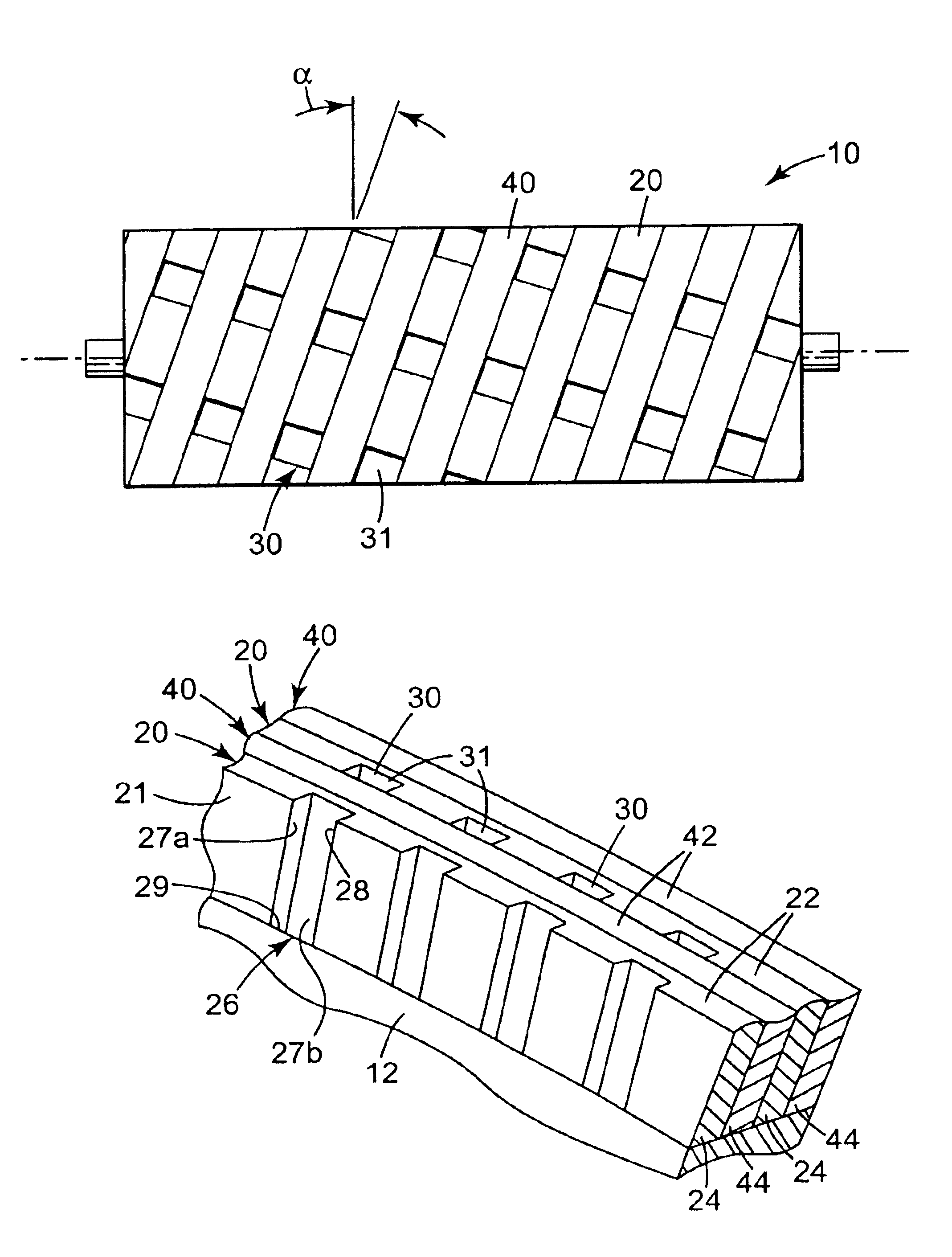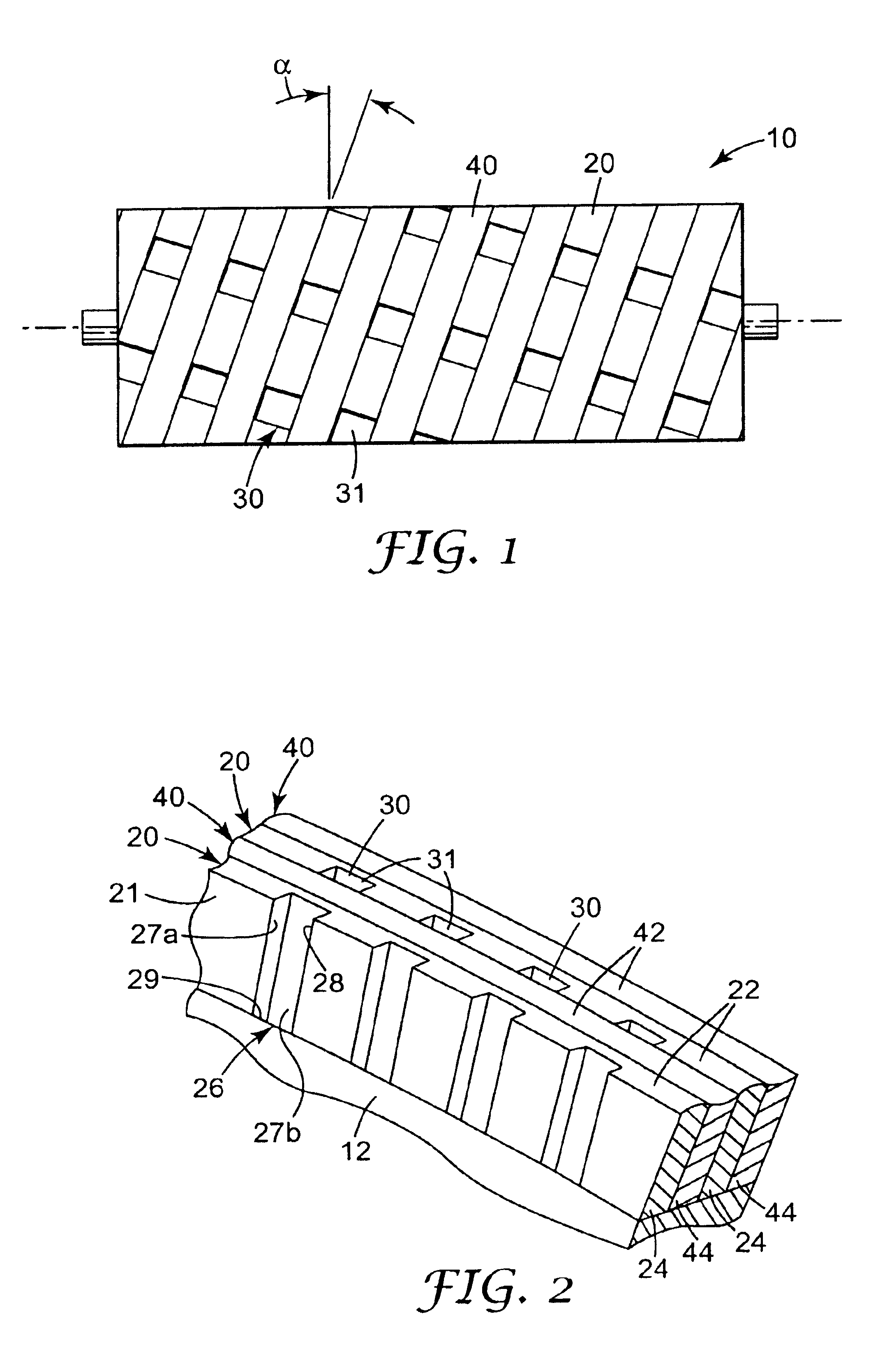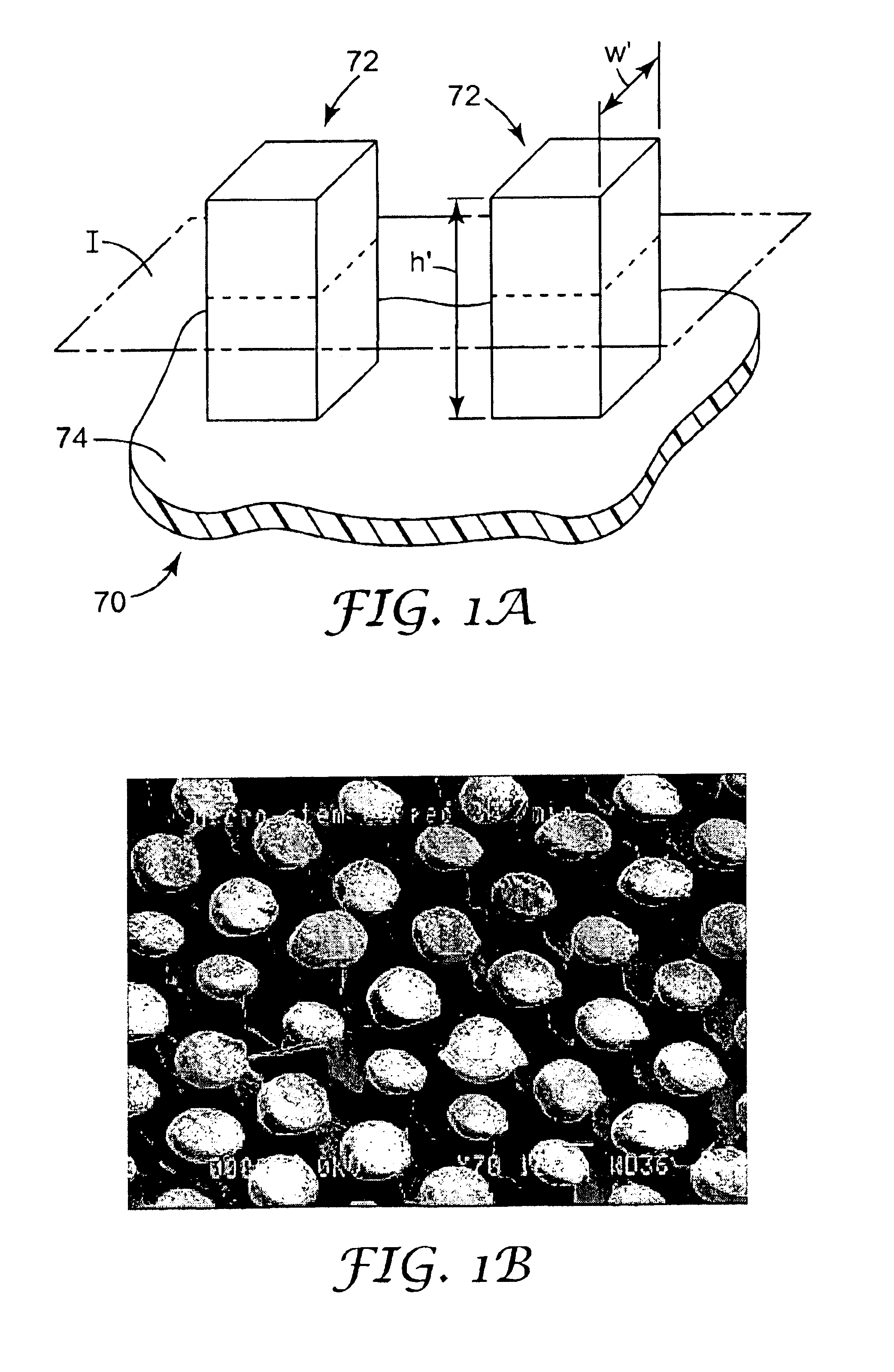Wire wound tooling
- Summary
- Abstract
- Description
- Claims
- Application Information
AI Technical Summary
Benefits of technology
Problems solved by technology
Method used
Image
Examples
Embodiment Construction
[0058]The present invention provides tool rolls and methods of using the tool rolls to manufacture articles with one or more structured surfaces. The tool rolls include an outer surface that, when used in connection with materials of the proper viscosity or formability, can form a structured surface on an article. Because the tools are manufactured in roll-form, they can be advantageously used in continuous manufacturing processes to form e.g., films, sheets, etc. Alternatively, discrete articles may be processed using the tool rolls of the present invention.
[0059]The tool rolls of the present invention may include mold cavities in their outer surfaces that, when used in connection with materials of the proper viscosity or formability, can form protrusions or structures on at least one surface of a film. Alternatively, two such rolls can be used in combination to form a film in which both major surfaces exhibit protrusions or structures.
[0060]FIG. 1 depicts one illustrative embodime...
PUM
| Property | Measurement | Unit |
|---|---|---|
| Density | aaaaa | aaaaa |
| Area | aaaaa | aaaaa |
| Height | aaaaa | aaaaa |
Abstract
Description
Claims
Application Information
 Login to View More
Login to View More - R&D
- Intellectual Property
- Life Sciences
- Materials
- Tech Scout
- Unparalleled Data Quality
- Higher Quality Content
- 60% Fewer Hallucinations
Browse by: Latest US Patents, China's latest patents, Technical Efficacy Thesaurus, Application Domain, Technology Topic, Popular Technical Reports.
© 2025 PatSnap. All rights reserved.Legal|Privacy policy|Modern Slavery Act Transparency Statement|Sitemap|About US| Contact US: help@patsnap.com



